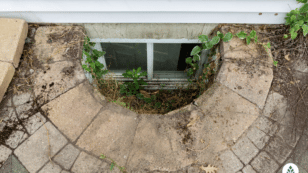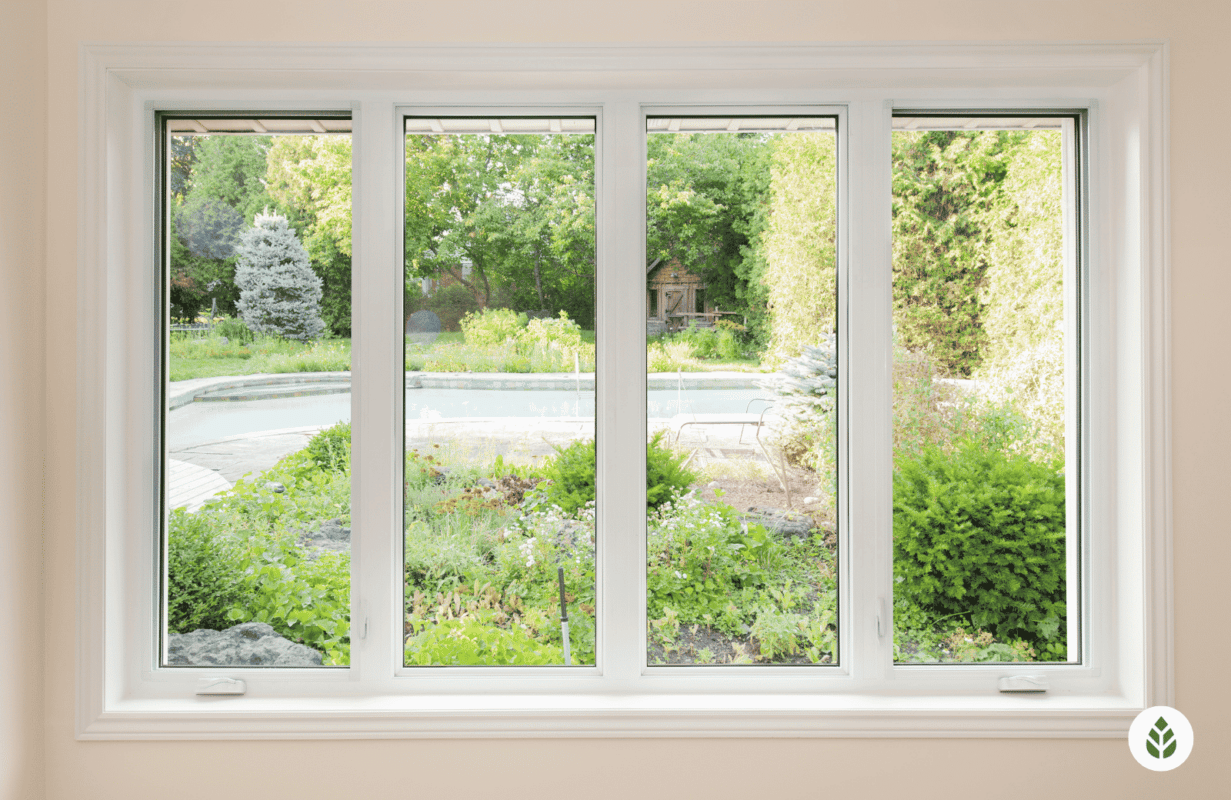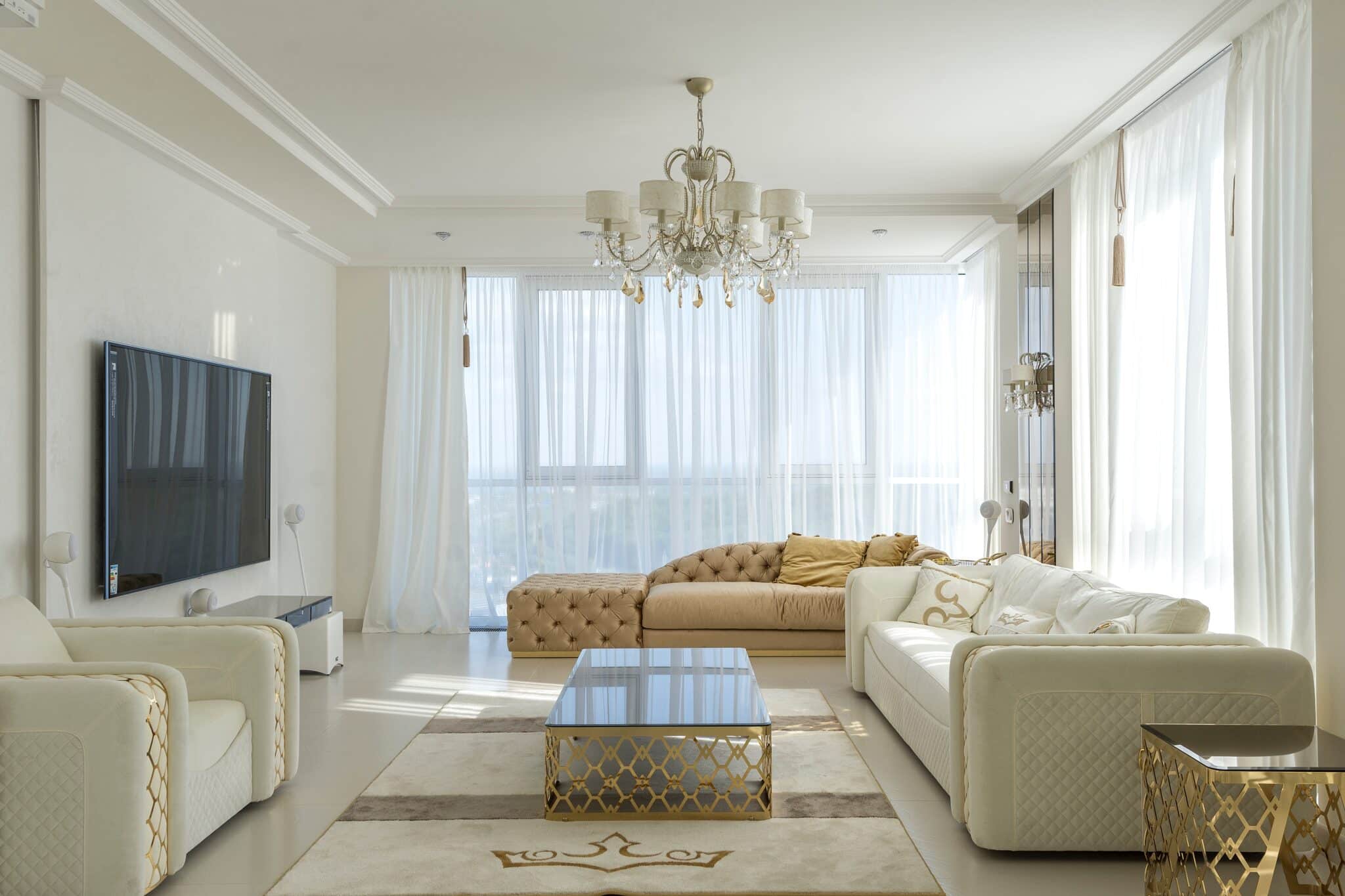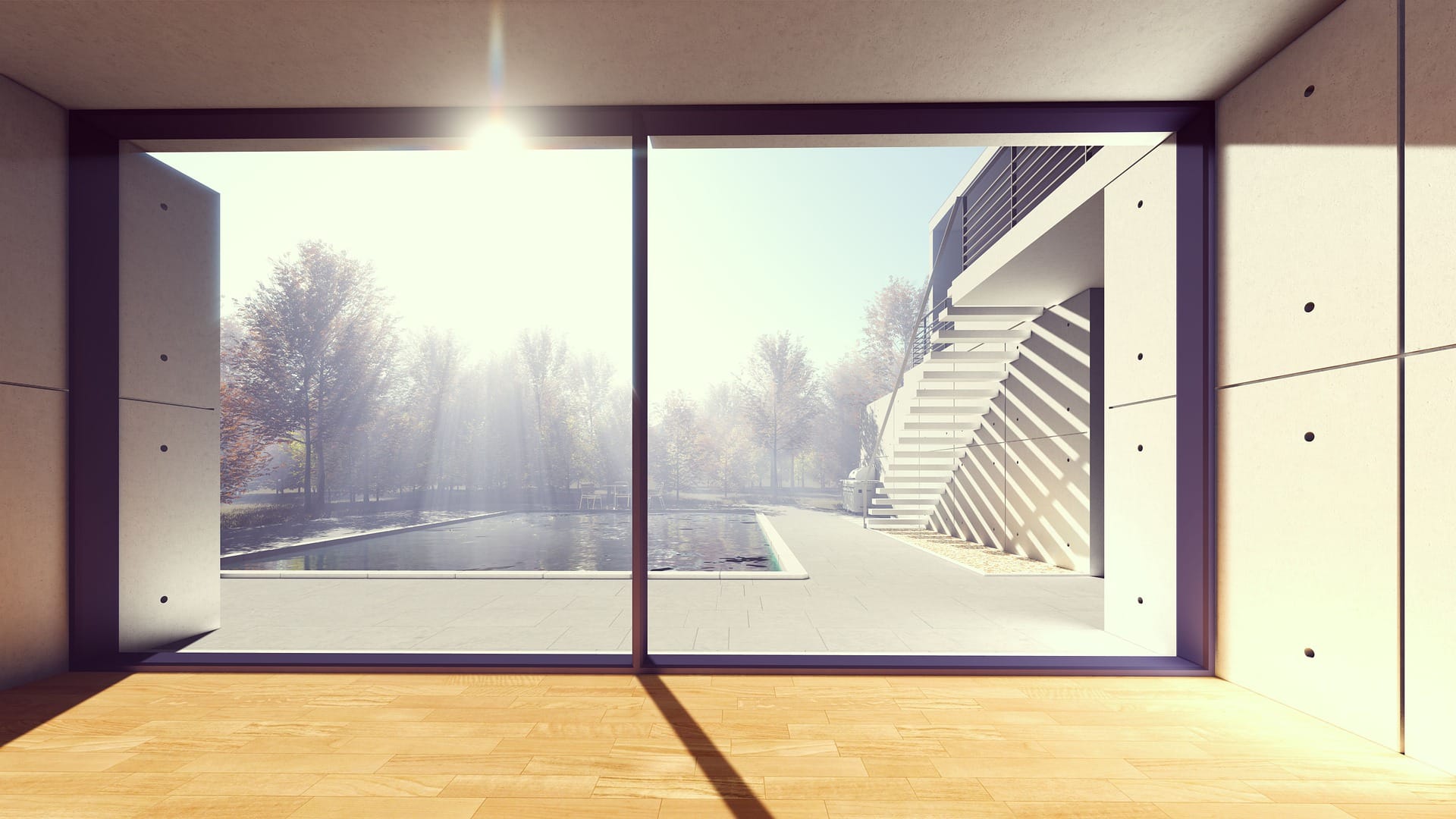

Picture Windows Cost of Installation and Guide 2024
In this guide to buying and installing picture windows, we’ll cover:
- The average cost of replacing a picture window — is currently around $600 or between $350 and $850
- Why the size of your picture window is often the biggest cost factor
- Why picture windows are the most energy-efficient window type available
Each product and or company featured here has been independently selected by the writer. You can learn more about our review methodology here. If you make a purchase using the links included, we may earn commission.
The national average price to replace a single picture window is around $600, but your total could fall between $350 and $850, or well over $1,000 in some cases. Where in this price range your total falls depends on a few different factors, including the size of the window, glass type, frame material, and more.
In this guide, we’ll discuss the cost factors that influence your window replacement cost and how each one can affect your pricing. We’ll also discuss how to choose the best materials and window professionals for your window replacement project.
What Are Picture Windows?
Picture windows — also called fixed windows — are windows that don’t open. They serve primarily as a decorative element and to let light into your living space. They also provide unobstructed views of the outdoors, adding natural beauty to your room.
Picture windows can come in a variety of shapes and sizes to fit your space. They’re most often found in living rooms, but they can be a welcome addition to just about any room in your home.

Renewal by Andersen
Pros
- Great industry reputation
- Award-winning company
- Member of US Green Building Council
- Manufactures products in-house
Cons
- No lifetime warranty
- More expensive than competition

Window World
Pros
- EnergyStar Partner
- Large service area
- Wide variety of products and services
- Great industry reputation
- Lifetime warranty
Cons
- Quality of service will depend on your area

Window Nation
Pros
- Award-winning company
- Wide variety of products and services
- Manufactures products in-house
- Custom Designs
Cons
- Installation not covered by warranty
- Limited service area
Benefits of Picture Windows
Picture windows come with a few key benefits over other standard window types. These include:
- Excellent insulation and energy efficiency: Since there are no moving parts, there are no seals that can be broken over time.
- Affordability: Picture windows are relatively easy to manufacture since in most cases they involve a single pane of glass and no moving sashes. This simplicity often leads to below-average installation prices for picture windows.
- Reduced energy bills: Since picture windows are highly insulative, they provide energy savings over other window options like single-hung and double-hung windows.
- Unobstructed views: Unlike other types of windows, picture windows often don’t have muntins, grilles, or rails that impede your view of the outdoors. You’ll also maximize the amount of light coming into your living area.
- Enhanced home security: Since picture windows don’t open, they naturally present less risk of burglary or home invasion.

Drawbacks of Picture Windows
Of course, there are also some downsides to installing picture windows in your home. These include:
- Lack of ventilation: Picture windows don’t open, so they won’t provide any fresh air in your home. For most homeowners, this is picture windows’ most significant drawback.
- More challenging to clean: You’ll have to clean picture windows both from the outside and the inside of your home. This is less convenient than the cleaning process for operable windows in which, for example, the sashes tilt inward to allow for easy cleaning.
- Heat gain: While picture windows are more insulative than most other types of windows, they do allow the most light into your home. This can lead to increased heat gain, especially in areas where sunlight is intense and abundant.
How Much Are Picture Windows, Really?
The average price to replace a picture window is around $600, but your total could land anywhere from around $350 to $850, depending on a few cost factors. Large picture window pricing is a bit higher, depending on frame and glass materials, so you could pay $1,000 or more in some cases.
Window Cost Factors
The price range for picture windows is so wide because many factors influence the cost. Below, we’ll briefly explain how each can affect your pricing.
- Window style: There are a few different styles of picture windows available, ranging from a single rectangular window to decorative options like arched glass on top and muntins, grilles, and rails within the window. More complex styles will naturally cost more.
- Window size: The larger your picture window, the higher your window replacement cost will be. Not only will you be paying more in window material costs for larger windows, but you’ll also be subject to higher labor costs if the window is challenging to maneuver safely or lift into place.
- Frame material: The frame option you choose — usually wood, vinyl, aluminum, fiberglass or composite material — can drastically affect your picture window replacement cost. The frame material will also affect your home’s energy efficiency, which can have an impact on long-term energy savings.
- Window construction: The overall durability and quality of your window will always play a role in the cost of replacement. Higher-end windows with features like voids in the frame for foam insulation and long-lasting joints will naturally cost more upfront. However, they can save you money in the long run on energy bills and replacement costs.
- Brand or series of windows: There are many different window brands and models to choose from, from budget options like Jeld-Wen and Reliabilt to higher-end brands like Pella, Marvin, and Andersen. More expensive brands tend to provide better value and more durability, but they’ll drive up your up-front costs.
- Glass choice and treatments: Most homeowners choose double-pane glass for their windows with no glass coatings. However, you can opt for less expensive single-pane glass if efficiency isn’t an issue or triple-pane glass with low-emissivity (low-E) coatings or window tinting for maximum efficiency and insulation.
- Accessories: Picture windows don’t require locks or cranks since they don’t open. However, you might want to think about adding muntins or grilles on the pane itself for decoration or additional pieces of window trim to improve the appearance of your window.
- Permit cost: In some municipalities, you’ll need to pull a permit for improvements including window replacement. Figure in an extra $50 to $200 if you’ll need a permit.
Window Installation Pricing Factors
Most of the factors discussed above affect your material cost, but labor will be a significant portion of your total price as well. Below, we’ll explain some of the factors that can influence the cost of labor when replacing a picture window and how each plays into your total.
- Window size and shape: Large picture windows can be difficult to install and require safety equipment and multiple installers. This can increase your labor costs quite a lot, as can long or particularly tall picture windows that are challenging to maneuver.
- New vs. replacement: If you’re installing a new window on new construction, your cost of labor won’t be bumped up by having to remove an old window.
- Lift requirement: If your picture window is located on a second floor, your installers will often need a window lift to bring the window up for installation. This is especially true for larger picture windows. Use of a window lift will increase your installation costs, as it entails costs for machinery and an operator.
- Stucco repair: If the exterior of your home has stucco siding, then full-frame window replacement can damage the stucco and necessitate repairs. If you have stucco siding, it’s a good idea to budget $100 or more on top of the window replacement cost.
- Seasonality: Replacing your windows often can’t or shouldn’t wait, especially if you’re replacing damaged, leaking, or drafty picture windows. If you replace your window in the spring or early summer, when window companies are busiest, you’ll end up paying a bit more for the labor, on average.
- Geographic location: Finally, the location of your home can have an impact on your labor costs. Installers naturally charge more in more expensive areas due to the higher cost of living and the local cost of materials.
Average Costs of Picture Windows by Window Style
Picture windows come in a few different styles, and the one you choose can influence your replacement costs. The table below provides a quick look at the different types of picture windows and the average pricing for each.
| Type of Picture Window | Average Replacement Cost (Per Window) |
| Standard, rectangular | $600 |
| Standard, square | $500 |
| Arched picture window | $750 |
| Round picture window | $550 |
| Custom dimensions picture window | $1,000+ |
| Custom shape picture window | $1,200+ |
Picture Window Prices by Size
One of the most significant factors influencing the cost of your picture window replacement is size. Windows are often priced by the square foot, so the larger your window the more materials costs you’ll pay. You’ll also likely pay more for the labor to move, lift and install larger windows.

The table below provides a brief look at different picture window prices based on the size of the window.
Picture Window Dimensions |
Average Replacement Cost (Per Window) |
| 36” x 48” | $550 |
| 36” x 60” | $600 |
| 36” x 72” | $650 |
| 48” x 48” | $600 |
| 48” x 60” | $750 |
| 48” x 72” | $800 |
| 60” x 60” | $900 |
| 72” x 48” | $975 |
| 72” x 72” | $1,100 |
| 90” x 50” | $1,100 |
| 96” x 48” | $1,250 |
| 96” x 60” | $1,300 |
| 96” x 72” | $1,400 |
| 96” x 96” | $1,500 |
How to Purchase Picture Windows
Buying picture windows should be a relatively straightforward process, no matter where you purchase them from. However, you do have two primary options to choose between: a manufacturer like Milgard, Marvin, or Simonton or a home improvement store like Home Depot, Lowe’s, or Costco.
Buying windows from a manufacturer typically gets you better value, but your cost can be higher, depending on which company you choose. In most cases, you can get the best material costs from a manufacturer by coupling the window purchase with an installation. Just keep in mind that your total project cost will be higher if you pay for professional installation.
Purchasing single windows from a store like Home Depot gives you greater variety, including multiple brands to choose from. The prices you’ll pay can tend to be lower than from a wholesaler but the value will not be as high.
Best Brands and Pricing for Picture Windows
If you’ve already started doing your research on picture window options, you’ve likely come across many different brand names, all of which come at considerably different prices.
The price by brand for your window varies because of the construction, the quality of the materials, the window’s durability, and the warranty included.
In the table below, we’ll show you some average per-window pricing for replacement using some of the best and most popular brands available.
Brand of Window |
Average Replacement Cost (Per Window) |
| Andersen | $700 |
| Pella | $750 |
| Marvin | $750 |
| Milgard | $800 |
| Harvey | $900 |
| Simonton | $750 |
| Certainteed | $900 |
| Jeld-Wen | $500 |
| Reliabilt | $500 |
| Hy-Lite | $550 |
How to Get the Best Prices on Picture Windows
Although picture windows are typically more affordable than other styles of windows of equivalent size, they can still be quite expensive. Most homeowners replacing their picture windows will want to save money wherever possible without sacrificing quality.
One of the best ways you can do this is by choosing affordable frame and glass materials. For example, you can choose:
- Vinyl frames: Vinyl is a good insulator and provides decent energy efficiency. While they’re not as insulative as composite or fiberglass windows, vinyl windows are much more affordable, making them a good balance of efficiency and cost. Keep in mind that vinyl cannot be painted like wood and other frame options.
- Double-pane glass: Double-pane window glass is the most common option because it provides good insulation and is suitable for use in more extreme climates. It’s more insulative than one pane of glass, and it’s significantly cheaper than triple-pane glass.
- Skip glass coatings: Finally, you can avoid glass coatings, like low-E coating and window tinting. While these applications will make your windows more energy-efficient, they do drive up the cost. Additionally, since picture windows are already quite insulative, they may be unnecessary to realize significant energy savings.
You can also look for deals on picture windows, which are often provided by window manufacturers and installers around holidays. You can shop around for a few months and ask about upcoming deals or discounts, and if you aren’t in need of an emergency window repair, you can take advantage to save some money.
Timing your window replacement is a good way to save money as well. As mentioned above, window installers are usually the busiest in the spring and early summer, partially because most property owners would rather have their homes exposed to mild weather. Choose replacement in the fall or winter if you can to keep costs down.
You can also choose to replace all of your windows at once. Not only is this the best way to boost your home’s energy efficiency, but it will also yield the lowest per-window price. It’s true that this will push your total cost way up, but your per-window price will be lower because you’ll save on travel time, labor, and, in some cases, material costs with bulk pricing.
Finally, while hiring a professional window installer will cost more than a DIY picture window installation, it can actually save you money in the long run. Replacing a window yourself can be challenging, especially if you have no experience with the process. Any mistakes could lead to damaged windows, leaks, and other issues that will, over time, make your replacement far more expensive.
Calculating Picture Windows Budget
In order to calculate the cost of replacing a picture window and how much you need to budget, you can use the formulas below. We’ll include average pricing to make the calculation as straightforward as possible.
(Frame Cost + Glass Cost + Labor Costs + Glass Coatings + Window Accessories) x Brand Coefficient = Total Picture Window Replacement Cost
Total Picture Window Replacement Cost (from above) x 0.95 (discount factor) x number of windows in your home = Total for Replacing All Home Windows
Let’s assume you’re installing a high-end Milgard vinyl picture window with double-pane glass and no glazing or other add-ons. Your calculation would look like this:
($300 + $150 + $150 + $0 + $0) = $600 x 1.3 = $800 for a single Milgard picture window
($300 + $150 + $150 + $0 + $0) = $600 x 1.3 = $800 x 0.95 x 10 windows = $7,600 for 10 windows
Keep in mind that these numbers can change quite a lot when you consider seasonality, the location of the window on your home, where you live, and other factors.
FAQ Picture Windows
Below, we’ll answer some of the most common questions we see about picture windows and the costs involved in replacing them.
Picture windows are more affordable than many other common styles of window, including double-hung windows, single-hung windows, casement windows, and sliding windows. This is largely due to the fact that picture windows have no moving components, making them easier to manufacture.
Picture windows are also a great option for long-term affordability. The lack of moving parts means they require repairs less often, and the lack of moving sashes means they provide superior energy efficiency compared to most other styles of window, so they tend to provide lower energy bills overall.
With that being said, picture windows tend to be larger than other window types, and one of the most crucial cost factors to consider when replacing a window is how many square feet of glass you need.
Picture windows are more affordable than other styles of the same size, but larger picture windows will sometimes cost more because of material costs and added labor and equipment costs.
The process to install a picture window is about the same as it is for any other window type. If you’re installing a picture window in a rough opening on new construction, the process — including sealing and waterproofing the window — should take around a half-hour to 45 minutes for a skilled window installer or builder.
If you’re putting in a replacement window in your home, the process will more likely take between 45 minutes and two hours. This includes removing the old window and installing the new one.
If you plan on widening the wall opening or changing the shape, the process can take several days. In this case, your window installer will need to remove the old window and reframe the wall opening before installing and sealing the new window.
If you order windows from a company like Marvin or Milgard, or you order non-standard sizes or custom windows, you will likely be looking at four to six weeks from the time you order to the time the windows are delivered.
No. By definition, picture windows are not operable, have no moving sashes, and cannot be opened for ventilation. Picture windows are meant solely for allowing natural light into your living space, providing a view of the exterior from inside your home and adding curb appeal to your house.
If you want a window with operable sashes, some common alternatives to picture windows include single-hung windows, double-hung windows, casement windows, awning windows, and sliding windows.

 233k
233k  41k
41k  Subscribe
Subscribe 







